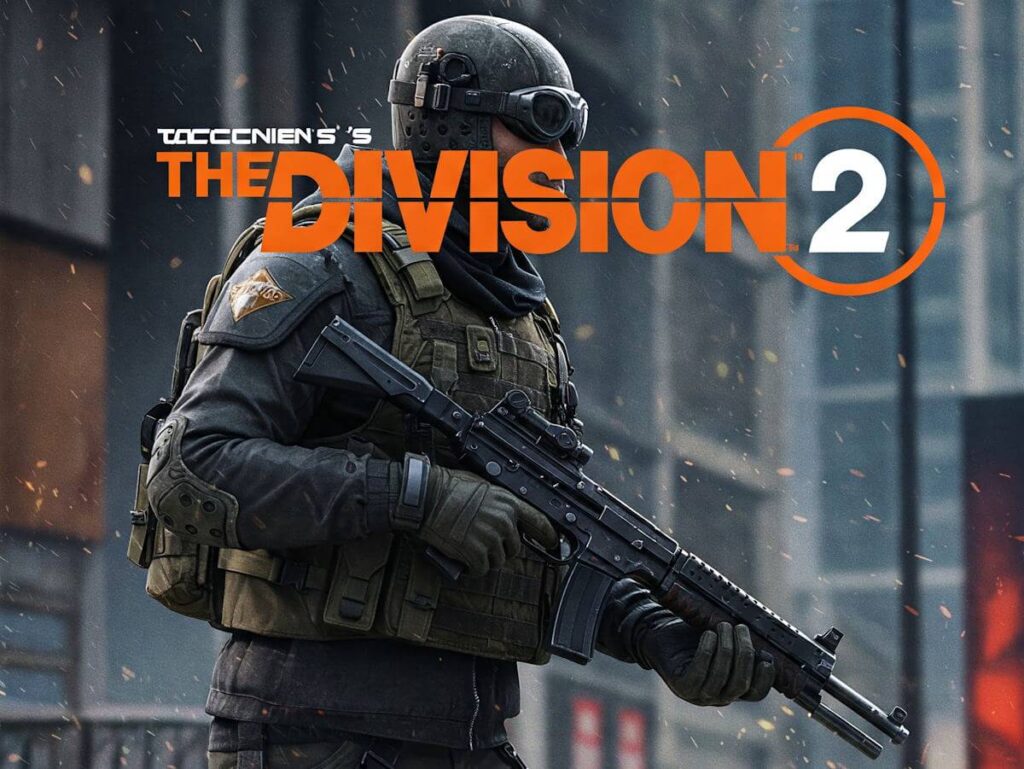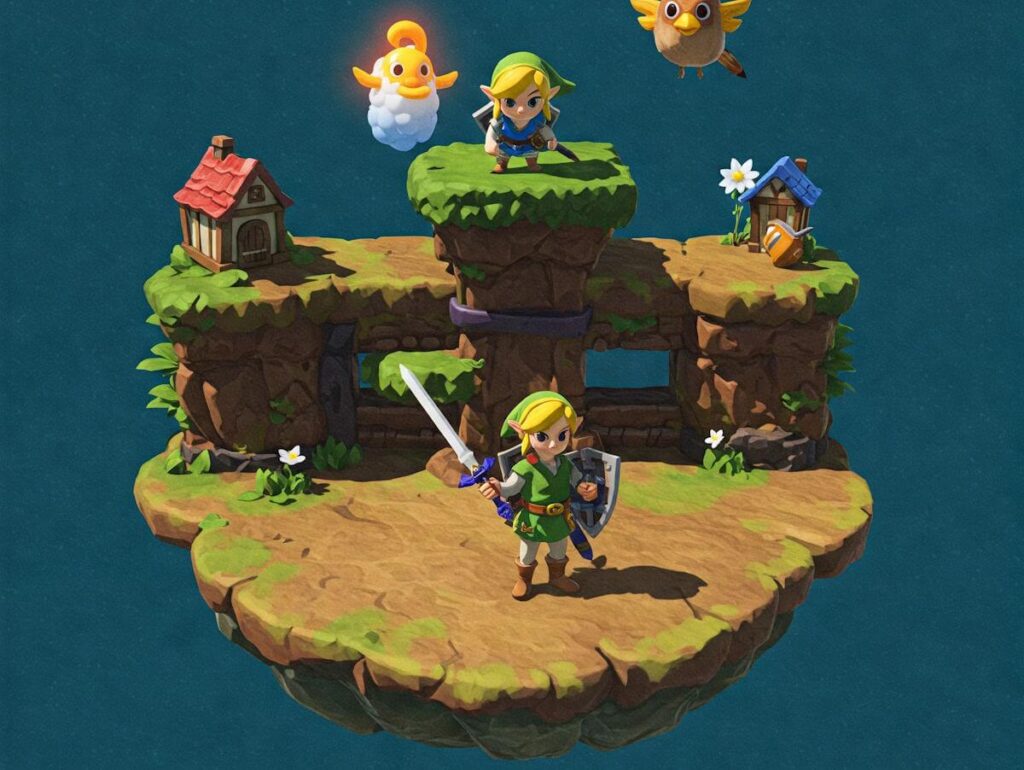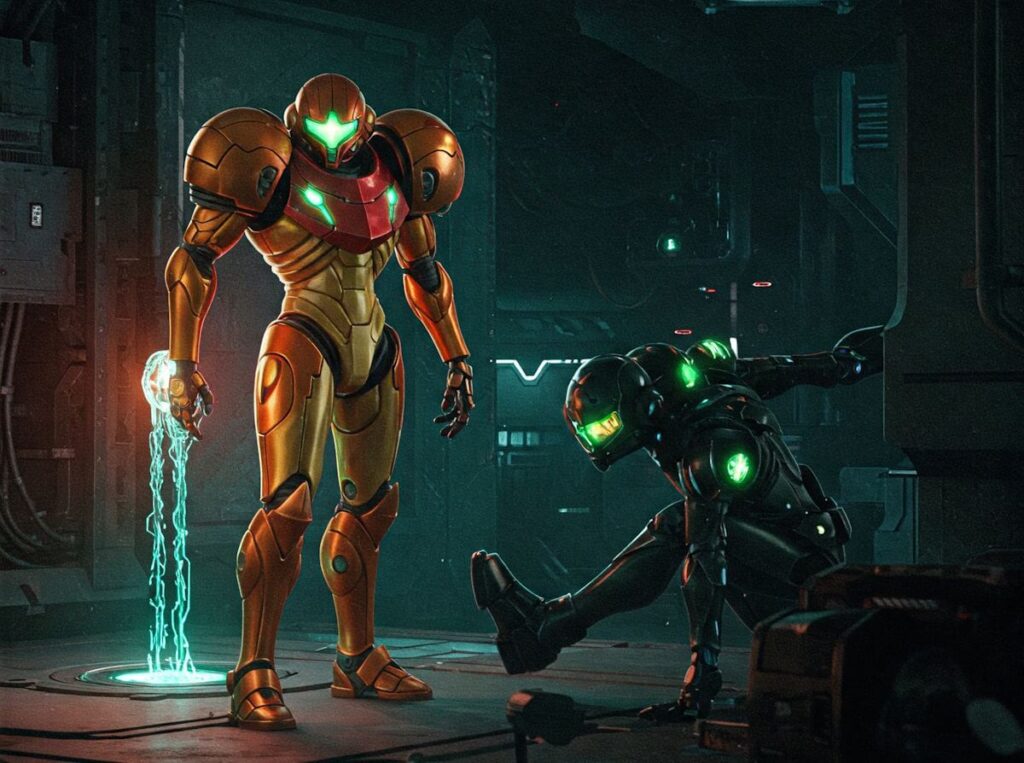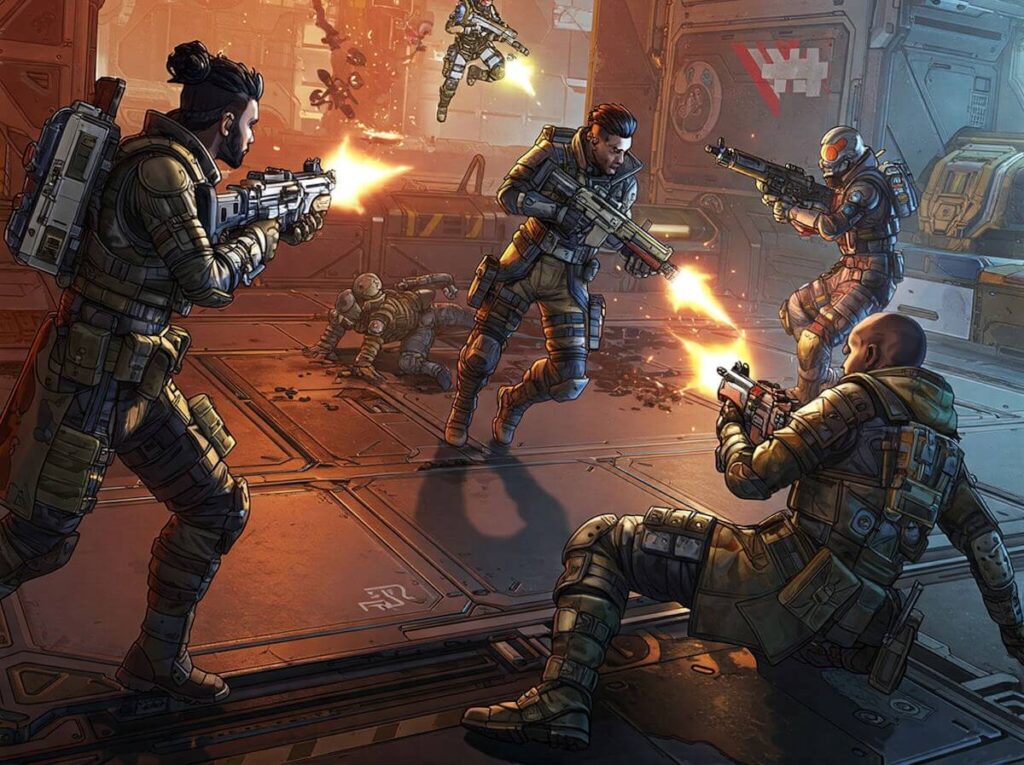‘The Division 2’ has established itself as a significant title in the gaming landscape since its initial release in March 2019. Developed by Ubisoft Massive, this shooter game places players in a post-apocalyptic Washington, D.C., where the world grapples with the aftermath of a devastating pandemic. The combination of role-playing elements and immersive, open-world gameplay invites players to explore a rich narrative while engaging in tactical combat. Upon its release, ‘The Division 2’ received largely positive reviews, with critics praising its intricate mechanics, refined gameplay, and a compelling storyline that builds upon its predecessor.
The game’s design encourages player cooperation, which enhances the overall experience and fosters a sense of community. Players must work together in various missions, demonstrating the game’s emphasis on strategy and teamwork. Moreover, its dynamic environment, enriched with various activities and challenges, has contributed to keeping the player base engaged. The continuous updates and expansions introduced by Ubisoft have played a crucial role in this engagement, ensuring that players have fresh content to explore while addressing the community’s suggestions and feedback.
As new shooter titles consistently emerge in the market, ‘The Division 2’ remains relevant by evolving and adapting to its audience’s preferences. The developers have focused on periodic updates, introducing new game modes, seasonal events, and quality-of-life improvements, which not only enhance gameplay but also maintain a lively gaming community. This adaptability highlights the game’s resilience amidst fierce competition, allowing ‘The Division 2’ to sustain its appeal in an ever-changing gaming ecosystem. As the gaming world continues to evolve, ‘The Division 2’ stands out, exemplifying how a well-designed shooter can captivate players and endure over time.
Rich and Immersive World-Building
Tom Clancy’s The Division 2 is set in a meticulously crafted post-pandemic Washington D.C., a location that not only serves as a backdrop but as a character in its own right. The developers have invested considerable effort into world-building, presenting a sprawling urban landscape marked by the aftermath of a viral outbreak. Each district is uniquely designed, reflecting the individual stories and environments that define this fallen society. From the iconic landmarks like the White House to the abandoned neighborhoods, players are invited to delve into a rich tapestry of visual storytelling that evokes a palpable sense of place.
The game’s level of detail is remarkable; players can observe weather changes that dynamically influence gameplay. This dynamic weather system enriches the immersive experience, creating a more authentic atmosphere. A sudden rain shower might obscure visibility while simultaneously enhancing the sounds of footsteps and gunfire, thus heightening the tension of encounters. Furthermore, the day-night cycle adds layers of realism, pushing players to adapt their strategies depending on the time of day, which invigorates the gameplay experience.
Exploration is highly encouraged in The Division 2, and the diverse districts offer a plethora of unique environments. Players can traverse various settings such as the historic streets that are teeming with remnants of society, each telling a story through environmental cues. The game fosters a sense of wonder as players uncover hidden secrets, collectibles, and lore that enrich the narrative. This attention to detail not only enhances immersion but also promotes deeper connections with the game’s world, allowing players to fully become engaged with the challenges it presents. Ultimately, the world of The Division 2 is a testament to skillful design, making it a noteworthy example of how environment can enhance player engagement and experience.
Engaging Gameplay Mechanics and Combat System
One of the defining features of Tom Clancy’s The Division 2 is its intricate gameplay mechanics that create a compelling and immersive shooting experience. At the heart of this engagement is the cover system, which promotes a tactical approach to combat. Players can seamlessly transition between cover and open areas, allowing for strategic maneuvering during intense firefights. This dynamic encourages users to plan their assaults carefully while also providing opportunities for quick adjustments as the situation evolves.
The gunplay in The Division 2 is finely tuned to balance realism and excitement. Each weapon feels distinct, with varied characteristics that cater to different playstyles. The attention to detail in weapon handling—ranging from recoil patterns to reload speeds—enhances the authenticity of the user experience. Additionally, the game incorporates an extensive arsenal of firearms, tailored to suit a range of combat scenarios, giving players the freedom to experiment with different loadouts to find what best fits their strategies.
Equally notable are the skill sets available to players, which further enrich the combat system. These skills introduce unique abilities that can be utilized in conjunction with weapons, offering a diverse range of tactical options. Players can choose from offensive skills like drones and turrets, as well as support skills that can heal or shield teammates. This versatility allows players to create synergies within their squads, enhancing the cooperative aspect of gameplay. The balance between tactical planning and fast-paced action ensures that players remain engaged, as they must keep adapting their strategies to counter the evolving threats presented by the game’s AI or real players in competitive modes.
The combination of a robust cover system, engaging gunplay, and diverse skills culminates in a combat experience that stands out in the realm of shooters. The Division 2 not only caters to fans of tactical gameplay but also appeals to those seeking adrenaline-pumping action, making it a continually relevant title in the gaming industry.
Continuous Content Updates and Expansions
Since its launch, The Division 2 has distinguished itself through a robust framework of continuous content updates and expansions, playing a pivotal role in maintaining player engagement. This approach not only enriches the game but also embodies the developers’ commitment to fostering a vibrant community. Free updates, alongside paid downloadable content (DLC) expansions, have ensured that players continually return to the game for fresh experiences.
One of the key components of this ongoing support is the introduction of new missions that expand the narrative and gameplay. Each update brings players back to the world of Washington D.C., as they explore new storylines and confront evolved threats. The incorporation of brand-new gear is another essential feature. With each update, players can acquire innovative weapons, armor, and customization options that allow them to enhance their gameplay experience and tailor their character build to fit their personal playstyle.
In addition to missions and gear, special events have become a hallmark of The Division 2‘s continuous content strategy. These events often come with unique challenges, limited-time rewards, and community goals to motivate players. Such features not only inject variety into the game but also foster a sense of camaraderie as players work together to achieve objectives. Significantly, these features contribute to a dynamic ecosystem where players remain invested in the game’s evolution.
Overall, the continuous stream of updates and expansions in The Division 2 underscores the importance of sustained support in the lifecycle of a game. By providing new content and engaging experiences, the developers succeed in keeping the player base active and ensuring that the game remains relevant amid the changing landscape of the gaming industry. Thus, it continues to solidify its position as a top shooter, resonating with both new and returning players.
Community and Multiplayer Experience
The community and multiplayer experience in Tom Clancy’s The Division 2 plays a pivotal role in its success and ongoing appeal. This online shooter provides players with a rich and immersive open-world environment where they can engage with one another in various ways, enhancing their overall gaming experience. Players venture into the game’s expansive landscapes, encounter each other in different missions, and share resources, which fosters a sense of camaraderie and collaboration.
Cooperative gameplay dynamics are central to The Division 2, as it encourages players to team up to face challenging missions and quests. The game’s design allows for seamless cooperative play, making it easy for friends to join each other’s sessions or recruit other players into their ranks. This collaborative approach is particularly vital during tougher missions, where strategic team effort can make a significant difference. Moreover, the communication tools integrated into the game bolster teamwork and make coordination smoother, leading to a more enjoyable experience.
In addition to cooperative aspects, The Division 2 also offers competitive gameplay modes, such as Player versus Player (PvP) arenas that add another layer of engagement. These modes allow players to pit their skills against others, creating a competitive environment that can be both challenging and rewarding. The introduction of raids further expands multiplayer dynamics, requiring teams to tackle large-scale challenges that demand precise coordination, expert communication, and a deep understanding of each player’s abilities. This competitive edge attracts players looking for more than just casual gameplay, contributing significantly to the game’s longevity.
Through active community engagement and robust multiplayer features, The Division 2 has cultivated a vibrant player base that reinforces its standing as a top shooter in the gaming world. The blend of cooperation and competition continues to captivate gamers, ensuring that the game’s relevance and allure persist over time.
Raids and End-Game Content: Challenges Await
Tom Clancy’s The Division 2 offers players an expansive array of end-game activities designed to provide sustained engagement long after the main storyline has concluded. Among these activities, the most significant are raids and elite missions, each tailored to present formidable challenges that require precise teamwork and strategic planning. The complexity of these high-stakes encounters helps maintain players’ interest as they navigate the intricacies of group dynamics in high-pressure situations.
Raids in The Division 2, such as “Operation Dark Hours,” are particularly notable for their size and scale. These activities can house up to eight players, demanding seamless communication and coordination to conquer highly organized adversaries. Each raid is structured with distinct phases, heightening the difficulty as teams must adapt their strategies accordingly. The ability to overcome each phase not only rests on individual skill but also on how well players collaborate to leverage each member’s strengths and abilities. Consequently, successful completion yields coveted rewards in the form of gear and cosmetics, further incentivizing players to return for multiple attempts.
In addition to raids, elite missions present an equally challenging experience for players seeking to test their mettle. These missions are marked by higher enemy difficulty and unique mechanics that force players to adjust their tactics continuously. Strategic planning is essential when attempting to tackle elite missions, as they often require thorough understanding of team roles, positioning, and the environment. Such content reinforces the essential cooperative aspect of The Division 2, as players discover that only through combined efforts can they prevail against the toughest challenges that this game offers.
Ultimately, the rich tapestry of raids and end-game content not only establishes The Division 2 as a top shooter but also ensures that players are perpetually challenged and engaged, fostering a strong community built on cooperation and the shared pursuit of success.
The Game’s Strong Narrative and Character Development
One of the most compelling facets of Tom Clancy’s The Division 2 is its strong narrative, which serves as an essential framework for character development and player engagement. Set in a post-apocalyptic Washington, D.C., the storyline intricately weaves players into a world ravaged by a deadly virus, compelling them to fight for survival and restore order. This immersive setting not only enriches the gaming experience but also cultivates a sense of urgency and responsibility amongst players, driving them to partake actively in the unfolding events.
The game’s narrative is layered, featuring diverse factions, each with unique motivations and agendas. As players progress through missions, they uncover various backstories and conflict dynamics, which deepen the overall plot and enrich character arcs. These elements encourage emotional investment; players are not merely shooting enemies but are engaged in a larger struggle for humanity’s survival. The resonant theme of rebuilding society resonates with players, fostering a sense of purpose and urgency as they navigate the game world.
Moreover, character development is expertly handled in The Division 2. Beyond the player’s avatar, the non-playable characters (NPCs) display significant backstories, personal struggles, and transformation throughout the game. Their evolution is carefully crafted to reflect the consequences of the game’s events, further enhancing the narrative depth. Through missions, dialogues, and cutscenes, players gain insights into their motivations, creating a more profound connection to these characters. This investment in the narrative and character arcs contributes significantly to the game’s longevity, as players are more likely to return to experience the ongoing story and its ramifications.
Visuals, Audio, and Technical Performance
One of the hallmarks of Tom Clancy’s The Division 2 is its exceptional visuals, which combine realism with an engaging aesthetic. The game employs a richly detailed environment that captures the essence of a post-apocalyptic Washington D.C. The level of detail in the game is impressive, characterized by intricate textures, realistic weather effects, and meticulous attention to urban landscapes. Players are immersed in a world where every corner is filled with lifelike elements, enhancing the overall gameplay experience.
The audio design in The Division 2 complements the visuals, creating an immersive atmosphere for players. A dynamic soundscape is a crucial aspect of any high-caliber shooter, and this game does not disappoint. From the environmental sounds that envelop the player in chaos to the crisp audio of weaponry and explosions, every auditory detail serves to heighten the tension and excitement. The voice acting is another strength, as well-voiced characters add depth to the narrative and resonate with players, fostering a connection to the storyline addressed within the game.
In terms of technical performance, The Division 2 runs smoothly across various platforms, supported by robust graphics engines that optimize performance without compromising quality. Players can expect stable frame rates and quick load times, which are critical factors in maintaining an engaging user experience. The game continues to receive regular updates that optimize its performance further, ensuring that players enjoy refined graphics and enhanced gameplay mechanics. These elements work cohesively to create an engaging shooter experience that not only appeals visually but also satisfies auditory expectations, keeping players invested in its vast open world.
Conclusion: Why The Division 2 Stands the Test of Time
Tom Clancy’s The Division 2 has successfully maintained its status as a leading shooter by delivering a rich gaming experience that resonates with both new and returning players. One of the primary reasons for this enduring appeal lies in its continuously evolving gameplay. The developers have committed to rolling out regular content updates and expansions, which not only keep the game fresh but also challenge players to explore new strategies and gameplay mechanics.
Another critical factor contributing to the game’s longevity is its vibrant and thriving community. Players engage actively in both cooperative and competitive modes, fostering an environment of camaraderie and teamwork. The Division 2 encourages players to join forces in tackling challenging missions and high-stakes raids, which enhances the social aspect of the game. This sense of belonging further solidifies the game’s place in the hearts of its audience.
The robust customization options available to players also play a significant role in retaining interest. Gamers can tailor their characters and gear to suit their preferred playstyle. This personalization appeals to a wide array of players, from those who enjoy a more stealth-oriented approach to individuals who favor heavy damage assaults. Moreover, the intricate systems of loot and skill progression provide a satisfying sense of achievement that keeps players returning for more.
In conclusion, Tom Clancy’s The Division 2 stands out as an engaging and dynamic shooter that invites players to immerse themselves in its detailed world. With ongoing support from the developers, a strong community, and deep customization options, the game has proven that it can adapt and evolve, ensuring its relevance in the competitive landscape of gaming. Those who have yet to experience its thrill are encouraged to dive in and discover what makes this title a staple among shooter enthusiasts.




